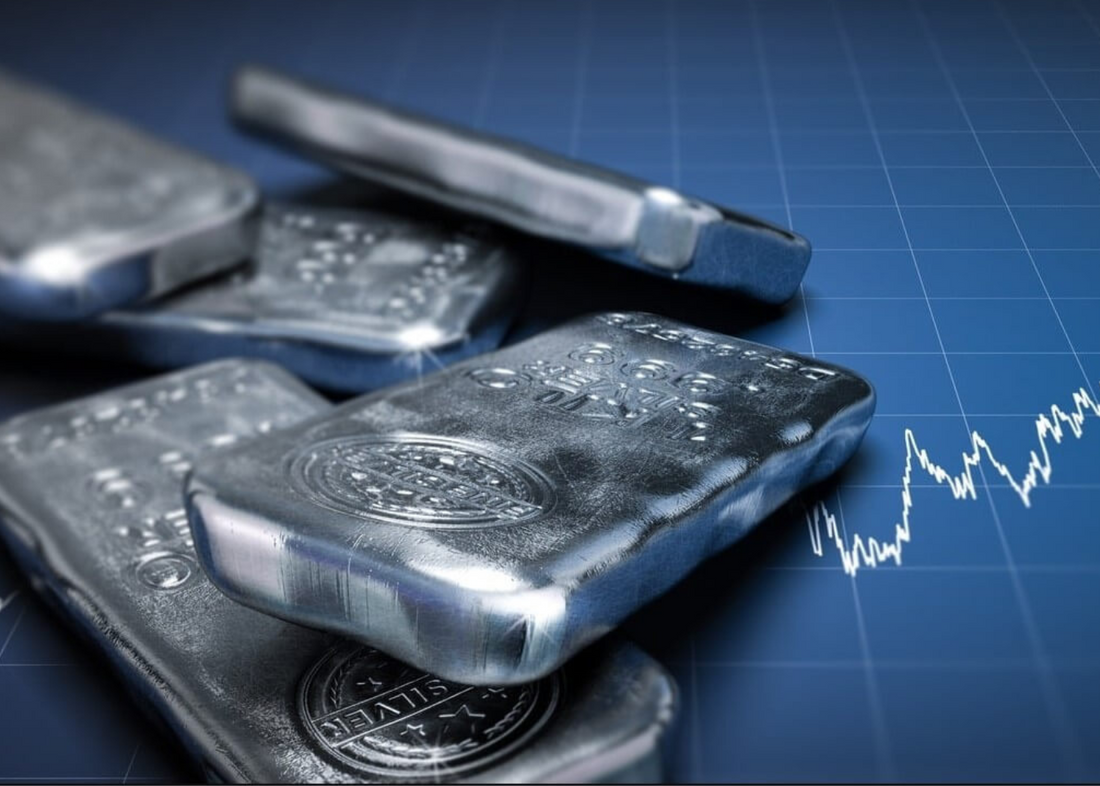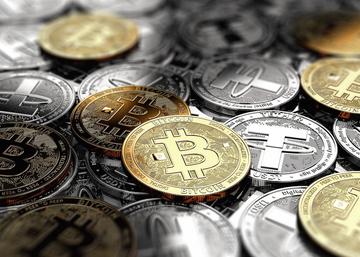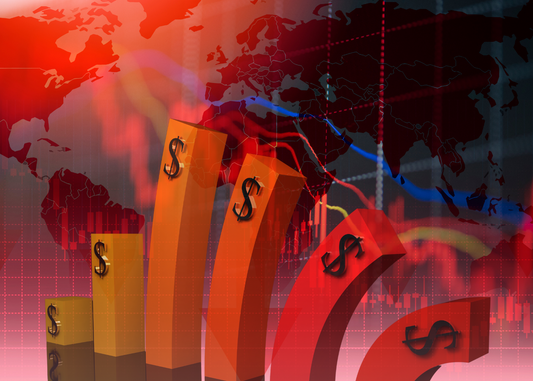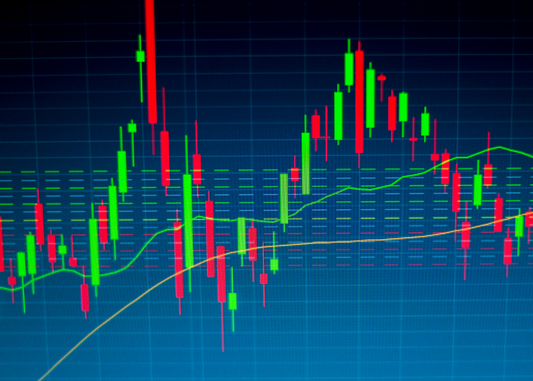What is silver trading and how to trade silver?

What is silver?
In the world of finance, silver is a commodity and an investment asset. As a precious metal that is second only to gold, it has historically been used as a form of currency, a safe-haven asset, and a hedge against inflation and stocks. Silver is traded on commodity exchanges around the world and used in various industries, including electronics, solar energy, photography, and the production of batteries.
It is worth noting that while silver has many practical applications, it can also be subject to price fluctuations in financial markets. Factors that could cause price volatility in silver include supply and demand dynamics, economic conditions, and investor sentiment.
In the world of trading, the ticker symbol for silver is XAG. The letter “X” stands for “Index,” while ‘AG’ is silver's chemical symbol and stands for ‘Argentum,’ the Latin word for silver.

What is the silver market?
The silver market refers to the buying and selling of silver as a commodity or an investment asset. In the global market, silver is traded in various forms, including physical silver bars and coins, silver futures contracts, and silver exchange-traded funds (ETFs).

- Physical silver: This is when you purchase a quantity of silver (e.g., jewellery), which you physically hold as an asset until you are ready to sell.
- Silver futures: If you believe the silver price will go up in the future, you can enter a contract where you agree on a price to pay today for a quantity of silver that will be delivered at a set date in the future. The aim is to then sell the physical silver for more than what you paid.
- Silver CFDs: CFD trading lets you trade real-time price movements without having to buy any physical silver. Because CFDs are leveraged products, you only need to invest a small sum to gain full exposure to the underlying trade. Note that the profit or loss is calculated according to the full size of the trade position, so both profits and losses are magnified.
What is silver trading?

Silver trading refers to buying and selling silver with the goal of making a profit from price movements.
Silver has been highly valued by humans for centuries, used as a form of currency and in jewellery, and has become a critical raw material in global commerce and as a standalone investment. This inherent value and safe-haven appeal make silver an ideal trading commodity.
To invest in silver, you can either buy the physical raw material or simply trade the real-time price movements of the underlying asset.
How does silver trading work?
Here is a general overview of how silver trading works:
- Choosing a broker or trading platform: To begin silver trading, you will need to choose a trading platform or brokerage that offers access to the silver market. Make sure that the platform is reputable, regulated in your country of residence, and suits your individual trading needs and goals.
- Opening a trading account: Once you have selected a reliable trading platform, you will need to open a trading account. The process typically involves providing your personal information, verifying your identity, and agreeing to the platform's terms and conditions.
- Market analysis: Before placing any trades, it is essential to conduct market analysis. Traders use different methods, such as technical analysis (using charts and indicators to speculate on price movements) and fundamental analysis (examining supply and demand factors, economic data, and news events), to assess the potential direction of silver prices.
- Buy or sell: Based on your market analysis, you will decide whether to buy or sell silver. If you anticipate the price of silver to rise, you will enter a long position (buy), aiming to sell at a higher price. If you expect the price to fall, you will enter a short position (sell), intending to buy back at a lower price. Before placing a trade, it is also important to apply risk management tools, such as a stop-loss or a take-profit order.
- Trade execution: When you place a trade, you specify the details of your trade, including the quantity of silver you want to trade and any applicable leverage or margin requirements. The platform will execute your trade at the prevailing market price, and your position will be reflected in your trading account.
- Monitoring and managing trades: It is important to monitor the progress of an open trade. You can track the price movements of silver and evaluate whether to adjust or close your position based on your trading strategy. Traders often implement risk management techniques, such as setting stop-loss orders (automatically closing a trade if the price reaches a specified level) and take-profit orders (automatically closing a trade when a target profit is achieved), to manage potential losses and protect profits.
- Closing trades: When you are ready to close your trade, you will execute the opposite action from your initial position. For example, if you bought silver, you would sell it to close the trade. The platform will calculate your profit or loss based on the price difference between your entry and exit points.
It is important to note that silver trading involves risks, including the potential for financial loss. It requires careful analysis, risk management, and ongoing market monitoring. Traders should educate themselves, develop a trading strategy, and consider their risk tolerance and financial goals before engaging in silver trading or any form of speculative trading.

Why trade silver?
Some traders are drawn to silver for speculative purposes, aiming to profit from short-term price fluctuations by buying low and selling high. Investors may also trade silver as part of a broader investment strategy, seeking capital appreciation over the long term.
Portfolio diversification is another reason why investors choose to trade precious metals like silver. Diversification can help reduce risk by spreading investments across different asset classes, such as stocks, bonds, and commodities. Silver, as a non-correlated asset with an intrinsic value, can provide a hedge against volatility in other markets.
How to trade silver
Trading silver with Contracts for Difference (CFDs) allows you to speculate on the price movements of silver without owning the underlying asset. With CFDs, you can take both long (buy) and short (sell) positions on silver, potentially profiting from both rising and falling prices. CFD trading requires opening an account with a broker that offers CFDs on silver.

The ticker symbol for Silver is XAG. The letter “X” stands for “Index,” while ‘AG’ is silver's chemical symbol and stands for ‘Argentum,’ the Latin word for Silver.
Knowing the ticker symbol makes it easier to search for a silver trading product/index within the MT4 trading platform. At Axi, you can trade silver as a CFD against the US dollar, so the trading product symbol in MT4 is XAGUSD.
Advantages of trading silver
- Hedging against inflation: Being a precious metal, silver is a well-known hedge against inflation. During periods of rising inflation, the value of fiat currencies may decline, but the price of silver has historically shown an ability to rise. Therefore, trading silver can be seen as a way to protect the purchasing power of your assets during inflationary periods.
- Liquidity: The silver market is highly liquid, meaning that it is relatively easy to buy and sell silver quickly at fair prices. This liquidity ensures that traders can enter and exit positions without facing significant price distortions or obstacles. It also allows for efficient price discovery and minimises the risk of being unable to exit a trade.
- Accessibility: Trading silver is accessible to a wide range of investors. There are various platforms, exchanges, and financial instruments available that allow individuals to participate in silver trading. Whether you prefer physical silver, futures contracts, ETFs, or other derivatives, you can find a method that suits your preferences and investment goals.
Disadvantages of trading silver
- Price volatility: Silver prices can be highly volatile, experiencing significant price swings within short periods. This volatility can make trading silver more challenging and increase the risk of losses. Sudden price fluctuations may be influenced by factors such as economic conditions, geopolitical events, or changes in industrial demand.
- Risks related to leverage and margin: While leverage could amplify potential gains, it could also increase potential losses. If the market moves against your position, you may be required to deposit additional funds to maintain your position, or you could face liquidation, also known as a margin closeout.
- Various market factors: The silver market is influenced by various complex factors, including economic indicators and geopolitical events, industrial demand, and investor sentiment. Understanding these factors and being able to analyse them can be challenging. Lack of knowledge or misinterpretation of market factors can lead to poor trading decisions.
No comments
Home
Trive
TriveHub





0 comments